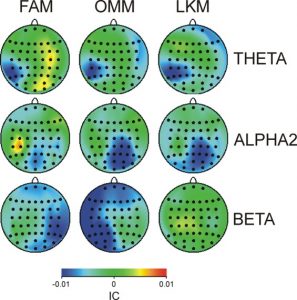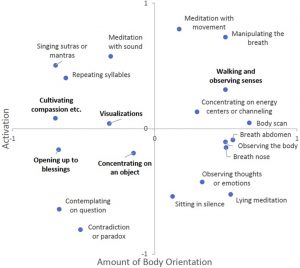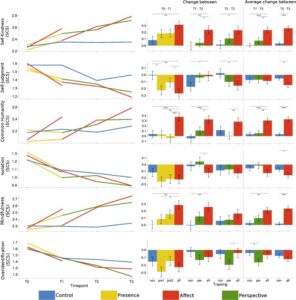Reduce College Students Self-Criticism with Mindful Lovingkindness Training
By John M. de Castro, Ph.D.
“What’s so amazing about mindfulness practice is we can use mindfulness to be aware when we have those self-critical voices, and we can label that voice as “judging”. We can notice when we have those judging voices because we have a mindfulness practice that allows us to have quite a bit more self-awareness, more ability to regulate emotions, and all of the positive things that come with the mindfulness practice.“ – Diana Winston
In the modern world education is a key for success. Where a high school education was sufficient in previous generations, a college degree is now required to succeed in the new knowledge-based economies. There is a lot of pressure on students to excel so that they can get the best jobs after graduation. This stress might in fact be counterproductive as the increased pressure can actually lead to stress and anxiety which can impede the student’s physical and mental health, well-being, and school performance. This is particularly true in very competitive Asian countries like Korea. This can lead to extreme self-criticism where the individual is never happy with themselves producing great unhappiness and psychological distress.
Mindfulness training has been shown through extensive research to be effective in improving physical and psychological reactions to stress and resilience in the face of stress. It has also been found to promote the well-being of college students. Mindfulness has been found to improve self-esteem. One understudied meditation technique is Loving Kindness Meditation. It is designed to develop kindness and compassion to oneself and others. The individual systematically pictures different individuals from self, to close friends, to enemies and wishes them happiness, well-being, safety, peace, and ease of well-being. Although Loving Kindness Meditation has been practiced for centuries, it has received very little scientific research attention. But it may be effective in counteracting the effects of stress and self-criticism.
In today’s Research News article “Psychological and Physiological Effects of the Mindful Lovingkindness Compassion Program on Highly Self-Critical University Students in South Korea.” (See summary below or view the full text of the study at: https://www.frontiersin.org/articles/10.3389/fpsyg.2020.585743/full?utm_source=F-AAE&utm_medium=EMLF&utm_campaign=MRK_1463957_69_Psycho_20201022_arts_A ) Noh and colleagues recruited healthy Korean college students who were high in self-criticism and randomly assigned them to either a wait-list control condition or to receive a Mindful Lovingkindness Compassion program. The training consisted of 8 2-hour sessions over 6 weeks of mindfulness meditation and Loving Kindness Meditation. They were measured before and after training and one and three months later for self-criticism, self-reassurance, mindfulness, compassion, shame, anxiety, depression, fears of compassion, satisfaction with life, and heart rate variability.
They found that in comparison to baseline and the wait-list control group, the Mindful Lovingkindness Compassion group had significantly higher self-reassurance, mindfulness, compassion, and satisfaction with life, and significantly lower self-criticism, shame, anxiety, depression, and fears of compassion. These improvements continued to be present 1 and 3 months after the completion of training. In addition, the Mindful Lovingkindness Compassion group had significantly higher heart rate variability.
The interpretation of these results has to be tempered with the knowledge that the comparison, control, condition was passive. This opens the study up to a number of potential confoundings. Nevertheless, the results are similar to those of prior research that found that mindfulness training produces higher self-reassurance, compassion, and satisfaction with life, and lower self-criticism, shame, anxiety, and depression. Hence, the current study suggests that Mindful Lovingkindness Compassion training produces improved psychological health in highly self-critical college students. In addition, the increased heart rate variability observed suggests that the trained students had greater physiological relaxation, probably indicating a great resistance to the effects of stress.
This is important for the well-being of college students. They are under great pressure to perform especially in Asian countries like Korea. Combining that with high levels of self-criticism is a formula for psychological and physical problems. The kind of mindfulness and loving kindness training employed here appears to be able to markedly counteract the deleterious effects of these forces and produce greater relaxation and overall well-being.
So, reduce college students’ self-criticism with Mindful Lovingkindness training.
“Self-criticism is an unhelpful habit that can sometimes be destructive and cause emotional ill-health. . . Through practicing mindfulness and self-compassion you can loosen up old self-critical habits that may have been present from childhood and develop a kinder, more appreciative way of being with yourself.” – Linda Hall
CMCS – Center for Mindfulness and Contemplative Studies
This and other Contemplative Studies posts are also available on Google+ https://plus.google.com/106784388191201299496/posts and on Twitter @MindfulResearch
Study Summary
Noh S and Cho H (2020) Psychological and Physiological Effects of the Mindful Lovingkindness Compassion Program on Highly Self-Critical University Students in South Korea. Front. Psychol. 11:585743. doi: 10.3389/fpsyg.2020.585743
Objectives: Self-critical behavior is especially relevant for university students who face academic and non-academic stressors, leading to negative outcomes such as mental distress and psychopathologies. To address this behavior, mindfulness and compassion are important factors to decrease self-criticism and ensure positive outcomes. This study examined the psychological and physiological effects of an intervention, the Mindful Lovingkindness Compassion Program (MLCP), on highly self-critical university students in South Korea.
Methods: Thirty-eight university students with a high level of self-criticism were assigned to an MLCP group (n = 18) or waitlist (WL) group (n = 20). Self-report measures of self-criticism, self-reassurance, psychological distress, and other mental health variables were completed, and the physiological measure of heart rate variability (HRV) was conducted before and after the intervention with both groups. In addition, 1- and 3-month follow-up assessments were conducted using self-report measurements.
Results: Compared to the WL group, participants in the MLCP group experienced significantly greater reductions in self-criticism and psychological distress, and a greater increase in self-reassurance, mental health, and HRV. The improvements in the self-report measures were maintained when assessed 1 and 3 months later.
Conclusions: MLCP could be a promising intervention for alleviating self-criticism and increasing self-reassurance among self-critical individuals.









